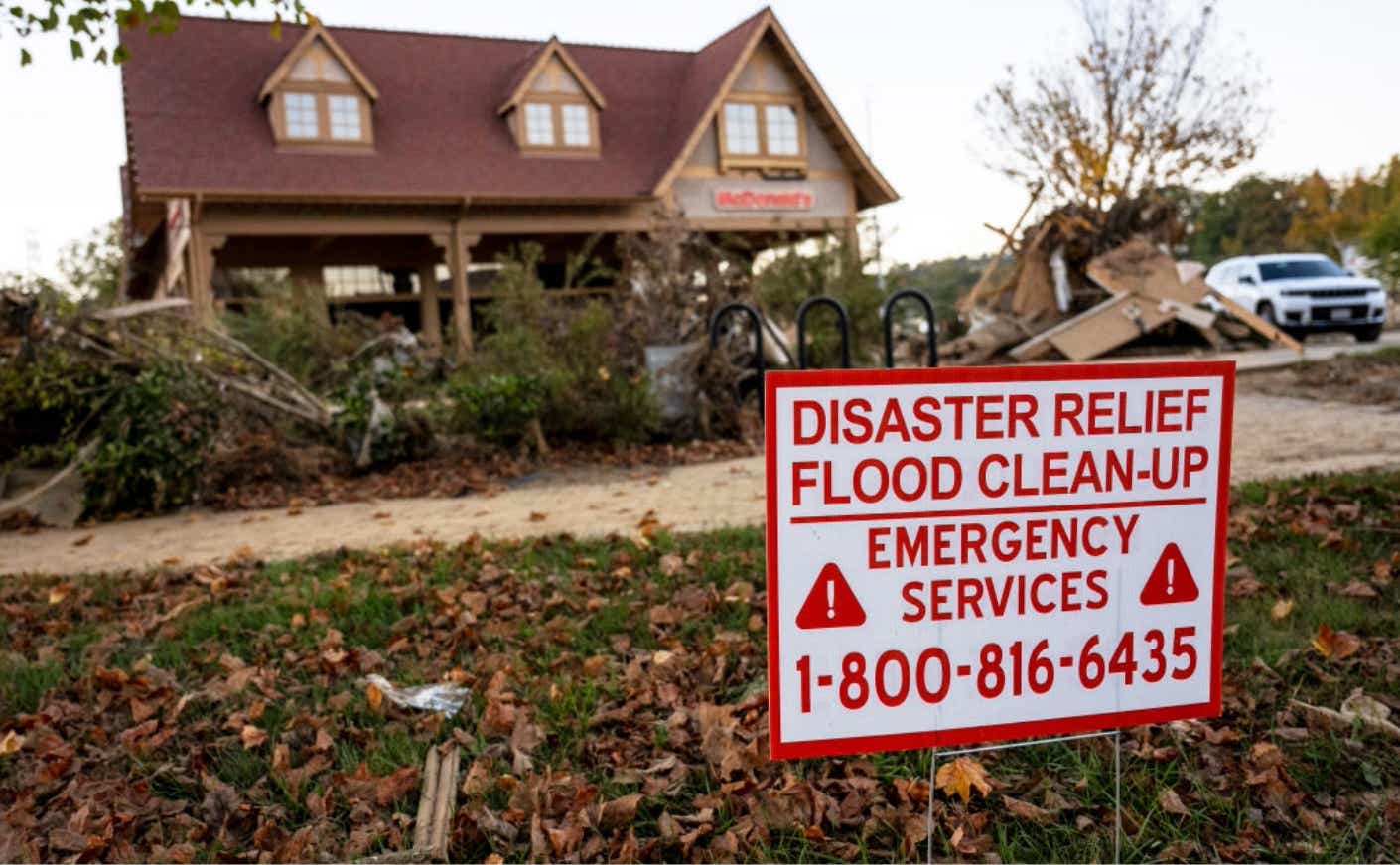When a hurricane hits or a town floods, someone has to help communities rebuild.
That responsibility largely falls to the Federal Emergency Management Agency, or FEMA — the federal government’s frontline responder when a natural disaster strikes, a phenomenon that’s becoming increasingly common due to climate change.
But FEMA hasn’t always looked the way it does today. Over the past few decades, the agency has evolved significantly — and now, President Trump is pushing to reshape it once again.
“Trump has come out with his guns blazing against FEMA,” New York University’s Rebuild By Design director Amy Chester tells us. “But you don't have to get rid of something a hundred percent to fix it.”
So what does FEMA actually do — and what happens if Trump gets his way? We took a closer look.
What does FEMA actually do?
FEMA’s mission is straightforward: helping people “before, during, and after disasters.” That means stepping in whenever hurricanes, tornadoes, earthquakes, or floods — like the devastating ones we recently saw in the Texas Hill Country — strike communities across the country. Based in Washington, D.C., FEMA employs over 20,000 people nationwide and operates through 10 regional offices.
But FEMA hasn’t always existed in its current form. Although its roots trace all the way back to 1803, it was officially established by President Jimmy Carter through an executive order in 1979. And even after that, FEMA has undergone some significant shifts — it became part of the Department of Homeland Security in 2004.
In recent years, the agency has faced criticism, particularly after Hurricane Katrina in 2005. FEMA was widely slammed for an uncoordinated response and delays in getting critical supplies to affected areas, especially in New Orleans, highlighting the challenges it still faces in fulfilling its mission.
What has Trump said about FEMA?
Since taking office, President Trump has openly criticized FEMA, even floating the idea of eliminating it entirely and handing disaster-response responsibilities back to the states. At one point, he described an executive order aimed at the agency as the start of “fundamentally reforming and overhauling FEMA — or maybe getting rid of FEMA altogether.”
But after the devastating floods in Texas, Trump seems to have quietly shelved that idea. According to a senior White House official speaking to The Washington Post, there aren’t currently any plans to dismantle FEMA. Instead, any upcoming changes will probably focus more on “rebranding” the agency and emphasizing state leadership in disaster response.
It's not yet clear what President Trump will decide: When asked if he might reconsider phasing out FEMA following the Texas floods, White House press secretary Karoline Leavitt said discussions about how best to structure federal disaster response are still ongoing.
“The president wants to ensure American citizens always have what they need during times of need,” Leavitt said. “Whether that assistance comes from states or the federal government, that’s a policy discussion that will continue. And the president has always said he wants states to do as much as they can, if not more.”
We should know more about how the agency will (or won’t) be rejiggered in the next few months. The FEMA Review Council, which President Trump set up through an executive order, just met for the second time this week — and it's expected to release a report in November outlining recommendations for improving federal disaster response.
White House spokeswoman Abigail Jackson said the council's recommendations will focus on making sure federal disaster-relief supports — but doesn't replace — state-level efforts. "FEMA’s outsized role created a bloated bureaucracy that disincentivized state investment in their own resilience," Jackson said.
This aligns closely with Trump's broader goals for FEMA. According to Jackson, the president wants to streamline the federal government’s budget while empowering states and local communities to take greater ownership of disaster preparedness and recovery.
But some experts caution that this could place a heavy burden on states: Under the current system, the federal government usually covers 75 percent of disaster costs, leaving states and local governments to shoulder the rest. In major catastrophes, that share can drop to 10 percent — or even near zero if Congress intervenes. Regardless of the split, the costs add up quickly, which is why FEMA often steps in early, sometimes issuing initial payments within 30 days.
“It's quite doubtful that most states would be able to shoulder the assistance on their own,” Chester tells us. “They really rely on federal resources — for instance, FEMA has a huge staff of people that are able to quickly move from location to location.”
Which states get the most FEMA money?
Federal disaster aid is more common than you might expect.
Between 2011 and 2024, 99.5 percent of congressional districts experienced at least one federally declared major disaster due to extreme weather. That assistance can take many forms — from individual aid for disaster victims to public funds directed to state and local governments. There’s also something called hazard mitigation — basically, it means investing in ways to lower the risk of future disasters before they strike.
It’s worth noting that under the Trump administration, some federal disaster funding has been delayed — and even when it’s approved, it’s often not granted in full. According to the policy group Revolving Door Project, 17 of the 19 disaster declarations Trump has approved have been partial. That includes states like Kentucky, West Virginia, and Tennessee.
This aid isn’t always distributed evenly. Red states — home to 42.7 percent of the U.S. population — account for 56.6 percent of federally declared disasters and receive roughly 50 percent of FEMA funding, according to an Associated Press analysis of Rebuild by Design’s data. Blue states, with 42.2 percent of the country’s population and 35.8 percent of its disasters, receive about 47.5 percent of the aid.
On a per capita basis, Chester said the difference isn’t as stark. She estimates that states that get the most amount of money are Louisiana, Hawaii, New York, Vermont, New Jersey, North Dakota, Alaska, Florida, and Texas.
She believes one way to make relief more effective is by listening to those directly affected. “The best way to improve FEMA is to ask the people who’ve been through its programs time and time again what challenges they faced,” she said. “Creating a process where the people most impacted can give feedback would help ensure the things that weren’t working actually get fixed.”
But at the end of the day, this isn’t just a red state or blue state issue. Communities of all political stripes are vulnerable when disaster strikes — and when help falls short. It’s a cost we all carry, quite literally.
“[Weather disasters] are happening to all of us,” Chester says. “Just looking at post-disaster funding from the federal government, it totals $287 billion. That’s huge. And it means you and I are paying for Texas right now, for the Kentucky floods, for every single disaster. It’s all our tax dollars.”









